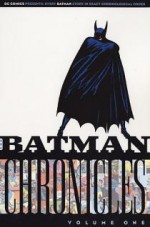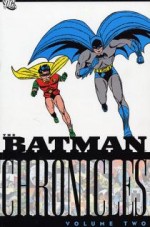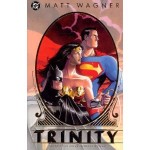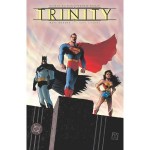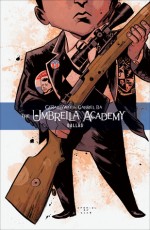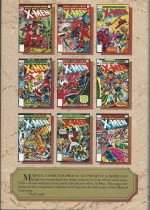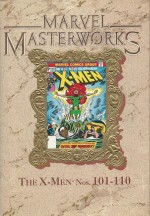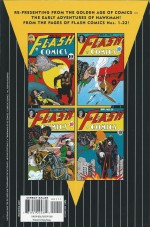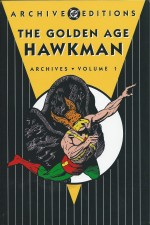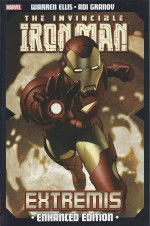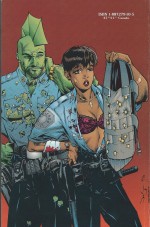
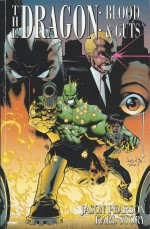
By Jason Pearson & Karl Story & various (Image Comics)
ISBN: 1-887279-10-5
In the fan-led, gimmick-fed early 1990s a group of young, ambitious comics-creators suddenly realised that they had a proven popular profile and all the power in the dwindling American marketplace. So they formed a co-operative company dubbed Image Comics and produced a welter of titles and characters their way…
For a while the co-operative’s stripped-down, post-modern, deconstructed output held collectors, if not always readers, in a frenzy of mass-consumption, but eventually the bubble burst and much of the material – ranging from derivative to frankly appalling – disappeared.
There was, naturally, a backlash, but when the dust settled old gits like me, who loved strong stories as well as pretty pictures, took another peek and realised that many of the surviving titles actually had something worth looking at.
One of the best and most consistently engaging titles was The Savage Dragon by Erik Larsen: a creator who never clearly forgot that although death-drenched, multi-layered epics and the continual angsty beating of meaty male chests was fine, bombastic action, strong traditional storytelling and wry humour never pall…
The Dragon is a bulky green bruiser with a giant fin on his head who woke up in a burning Chicago field one night: super-strong, exceedingly durable and with no memory of who or what he really was.
With no visible means of support but essentially a moral man, he enlisted in the police force just as a wave of super-criminals and manic monsters started appearing to menace the troubled citizens of the Windy City…
The series is Image Comics’ Great Survivor; continuously published since the first miniseries hit comic shops in 1992 and still the longest running full-colour American comicbook produced by a single artist/writer. In 1995 the series was adapted as a TV cartoon show running for two seasons.
I really must get around to reviewing the series some day, but here however I’m choosing to focus on a fabulous fun-filled diversion by Larsen’s associate Jason Pearson, who scripted and pencilled this deliciously over-the-top 3-issue miniseries with the deft assistance of inker Karl Story (& chums) as well as colourists Reuben Rude & Antonia Kohl and letterer Chris Eliopoulos.
At this time the marvellously down-to-earth Dragon had just lost his girlfriend Debbie – murdered by her crazy ex-boyfriend – and the Pistachio Powerhouse was determined to drink himself into oblivion, something his partner, occasional lover and regular, human hard-assed cop Alex Wilde was determined to prevent…
She got some unexpected help from the ever-unwelcome FBI when utterly obnoxious Agent Sheridan breezed into town demanding Chicago’s super-cop act as bodyguard to a crucial witness in a Federal case.
Alicia Cordova married the wrong guy. Not just because he’s a wife-beating criminal scumbag but because he’s also the super-powered top-ranking assassin dubbed “Gripâ€. Her testimony will put him away and expose the powerful clients he worked for… if she can get to the court alive. Moreover this time it’s not just her own health she’s got to consider…
Dragon just doesn’t care anymore and quits the force rather than work with an arrogant, manipulative creep like Sheridan, who exhibits some unusual tendencies of his own after shrugging off an extremely physical rebuke from the furious fin-head.
Meanwhile in a church, Grip and his gang of psychos are having fun, killing time – and the congregation – until their spy gets back from police headquarters…
After Dragon storms out Alex is determined to help. Maybe it’s because she went to school with Alicia, or maybe there’s something more going on. Dragon’s former boss Chief Wisenberg certainly thinks so…
Chapter two (with additional inking from Jason Martin, Aurora Chen, Cully Hamner, Brian Stelfreeze, Rick Mays & Drew Garaci) opens with a tense armoured-car ride already underway, carrying Wilde, Sheridan and three SWAT guys as well as the terrified Cordova to her final destination. Things start to go crazy when The Dragon busts in and commandeers the vehicle, forcing it to change routes.
He was almost in time…
Unfortunately Grip and his motorbike riding cronies are already trailing the van and their attack is sudden and devastating…
Despite being nigh-invulnerable Dragon can’t fully resist Grip’s death-touch and even though the brutal battle leaves the contract-killer with his eye shot out, the attacking assassins successfully make off with Alicia. In the body-bestrewn aftermath Sheridan is just too quick to close the case, though, making Wilde and the mint-green monolith wonder if some of those potentially exposed clients might include certain Governments…
Convinced Alicia is still alive and now certain who their real enemy is, the outraged cops go on one last blistering mission to take down the bad-guys and save the day whatever the cost…
Superbly synthesising and utilising all those much abused, old clichés of gritty cop/ mindless action movies, Pearson and crew have produced here a wonderfully sharp, no-nonsense, guns-a-blazing thriller made all the more realistic by the fact that the leading man actually is a bad-tempered, bulletproof gung-ho hero.
This is sheer visceral, cathartic fun that never takes itself seriously but goes all-out to blast you out of your seat with frantic, frenzied fun and beautifully rendered mayhem.
The Dragon & Alex Wilde © and ™ 1995 Erik Larson. All other characters © their respective creators or owners. All rights reserved.

